
Motocicleta eléctrica Qnut BK20
Presentamos el modelo insignia BK20: la aventurera de alto rendimiento definitiva, diseñada para quienes buscan la excelencia en cada salida. La BK20 cuenta con una batería extraíble de 864 Wh, conforme a la norma UL2849, que garantiza una entrega de potencia robusta y seguridad. Los frenos de disco dobles ofrecen una potencia de frenado precisa y sensible, lo que refuerza la confianza y el control en cualquier situación de conducción. El avanzado sistema de suspensión total, junto con una distribución optimizada del peso, eleva la calidad de conducción a nuevas cotas.
Sale
Puedes recibir la motocicleta eléctrica entre Octubre 13 y Octubre 17
Technical Specifications
Pagar con
Su transacción está protegida con medidas de seguridad avanzadas para mantener su información confidencial.
The High-Performance City Motorbike
BK20 Electric Motorbike
The BK20 is an urban electric motorbike built to command the streets. Its high-torque motor with Cold Start throttle delivers instant power from a standstill—no pedaling required. The four-inch fat tires and responsive dual disc brakes provide unshakable control over rough pavement and tight corners. With its aggressive stance and nimble handling, the BK20 is the ultimate machine for dominating your daily commute.
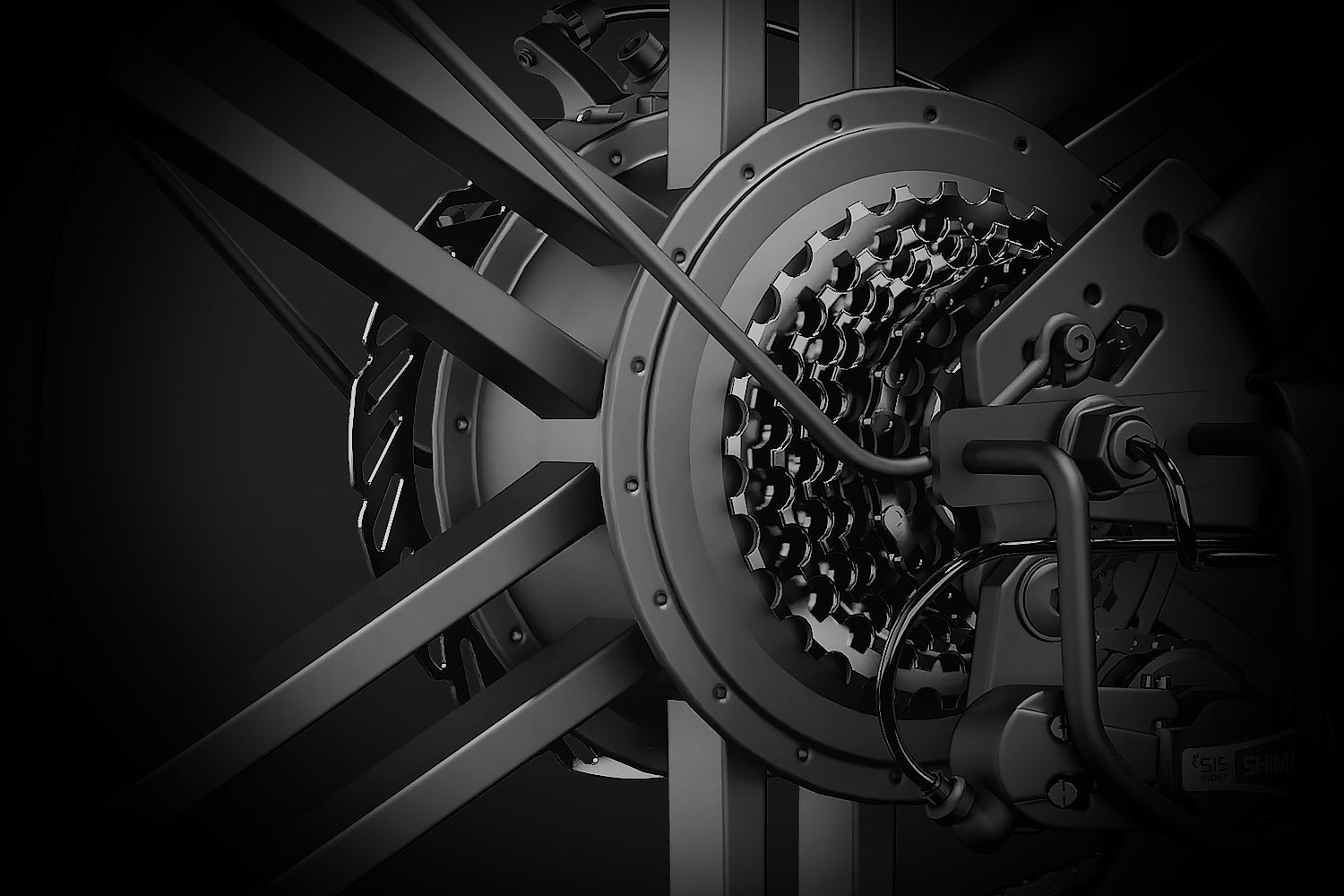
Power You Can Feel
Accelerations
The 500W (1500W peak) rear-hub motor delivers instant acceleration, making stop-and-go traffic a thing of the past. Silent operation (<45dB) means more thrill, less noise.
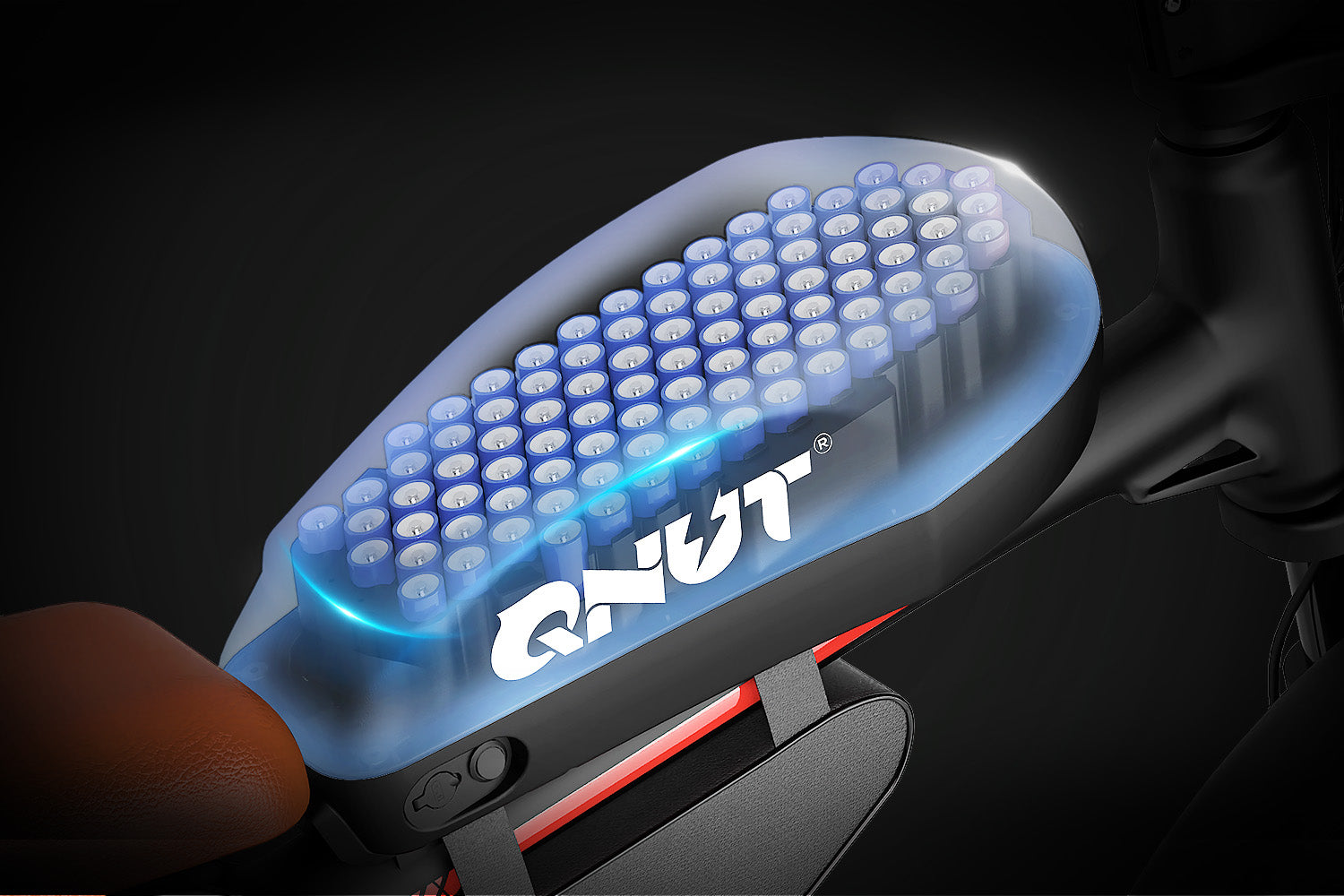
Large Battery, Long Range.
Portable Battery
Charge anywhere, ride everywhere. This lightweight, removable battery makes charging effortless—take it inside, plug it in, and get ready for your next adventure.
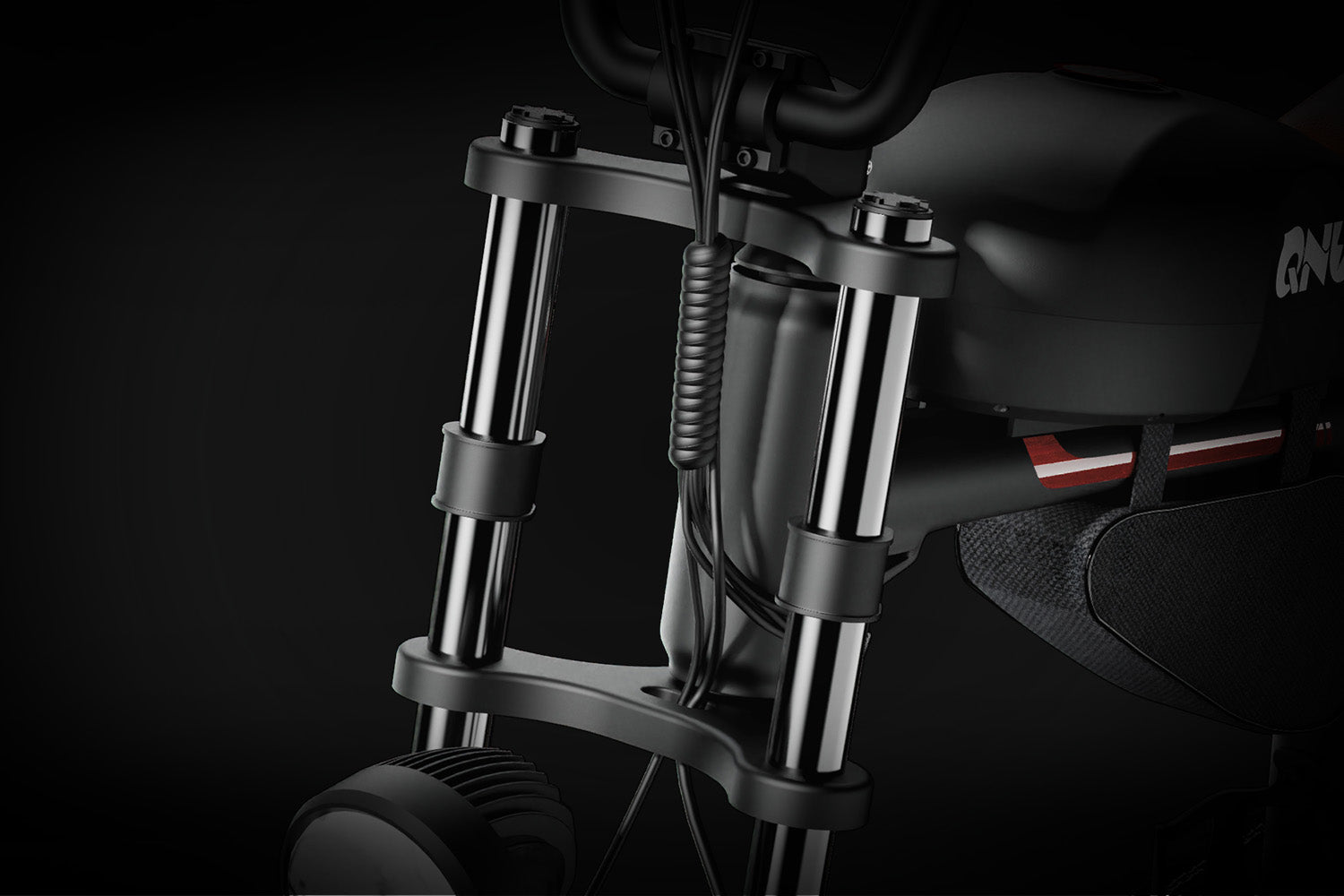
All-Terrain Dominance with Fat Tires
Full Suspension
Conquer any surface—city streets, gravel paths, or sandy trails. The 20" x 4.0" puncture-resistant fat tires provide unmatched traction, while the full suspension system (front fork + rear shock absorber) ensures a buttery-smooth ride.
Discover BK20
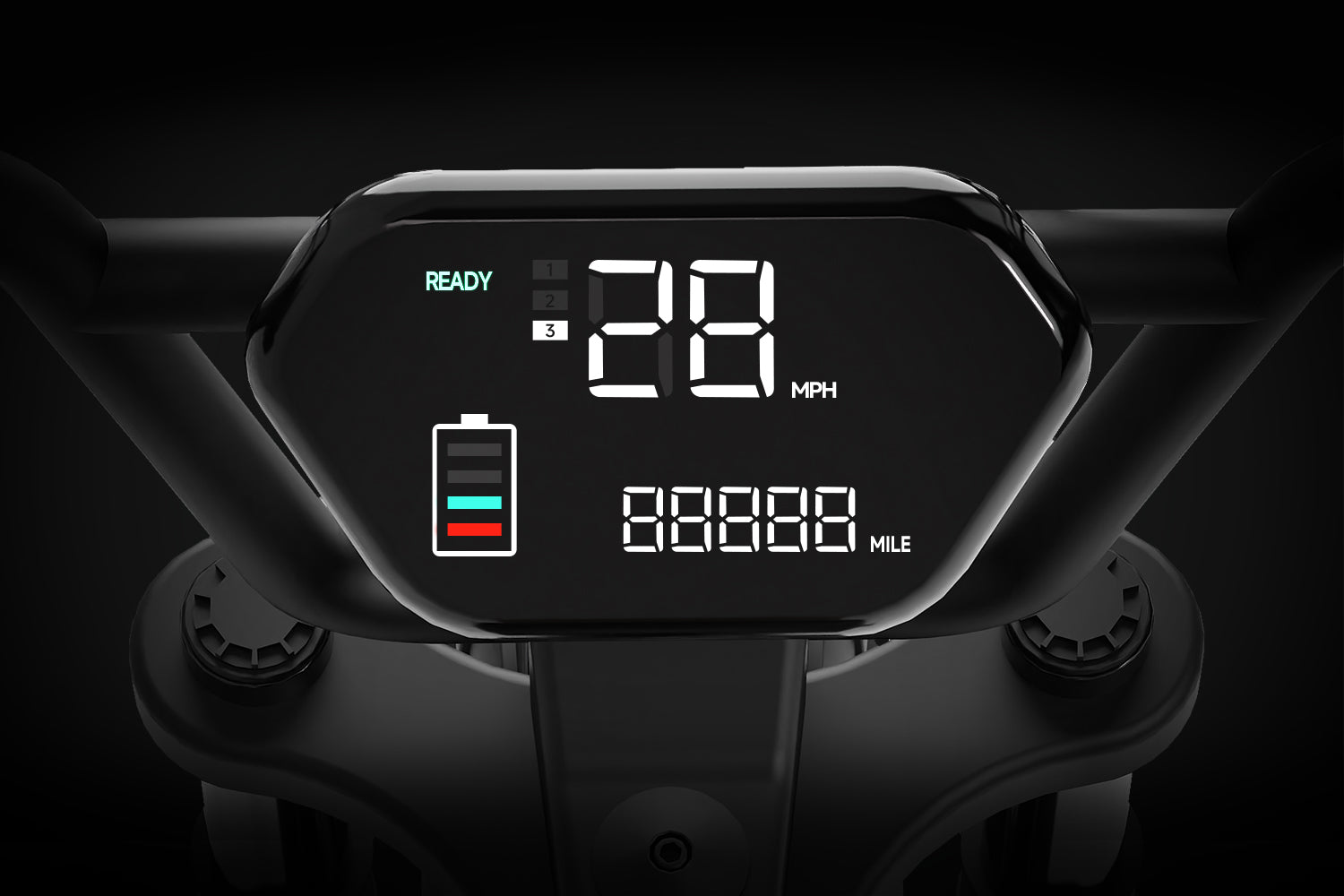
3-Speed Throttle. Ride Your Way.
Choose your speed with precision:
Gear 1: Cruise smoothly at 15 mph
Gear 2: Ride efficiently at 20 mph
Gear 3: Unleash full power at 28 mph
From city streets to open roads, twist the throttle and go.
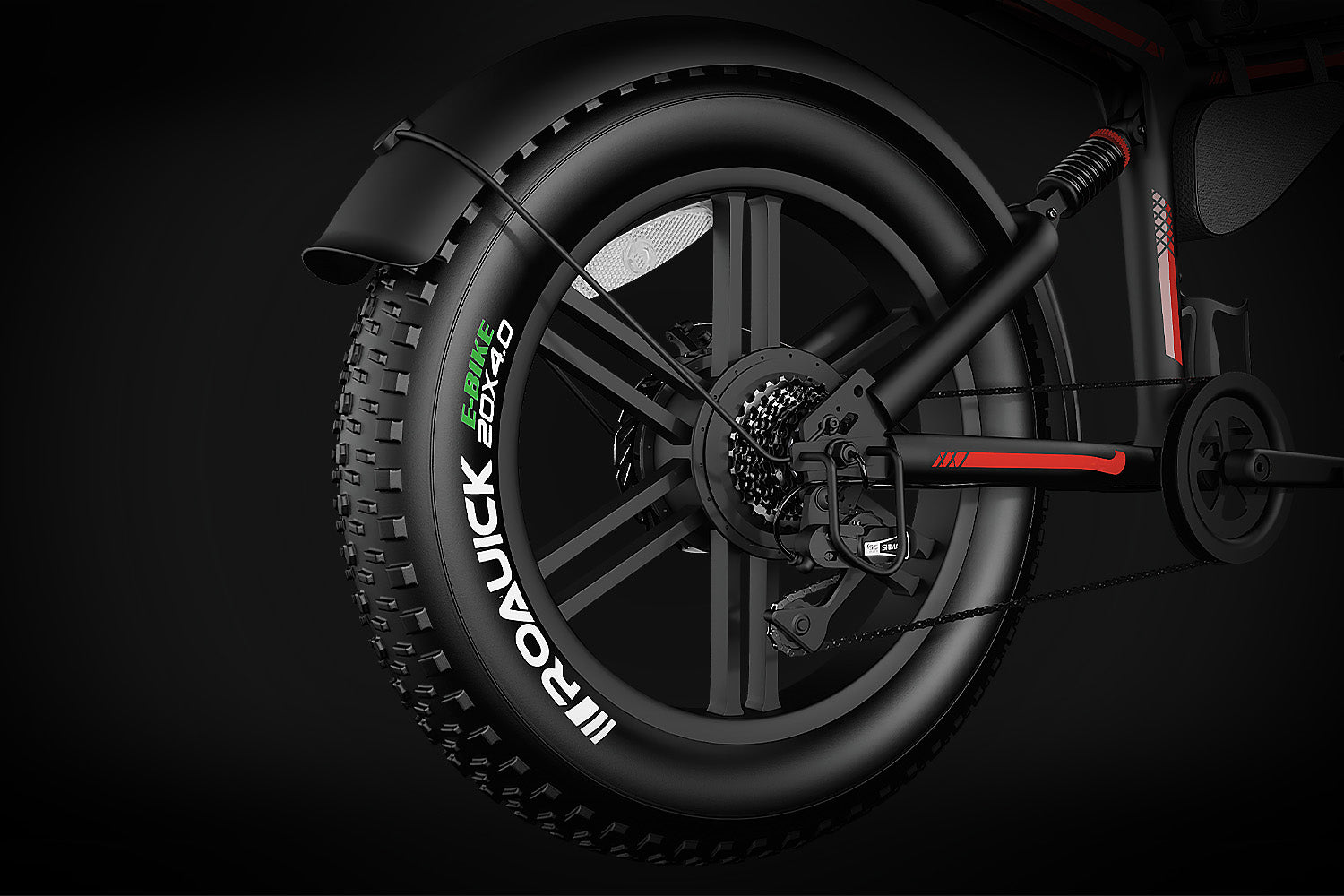
20 × 4.0" Fat Tires. Confident on Any Surface.
Whether it’s cracked pavement, loose gravel, or beach sand, the 20 × 4.0" fat tires offer a stable, cushioned ride. The wide tread grips with confidence—absorbing shocks and keeping you balanced wherever you roll.
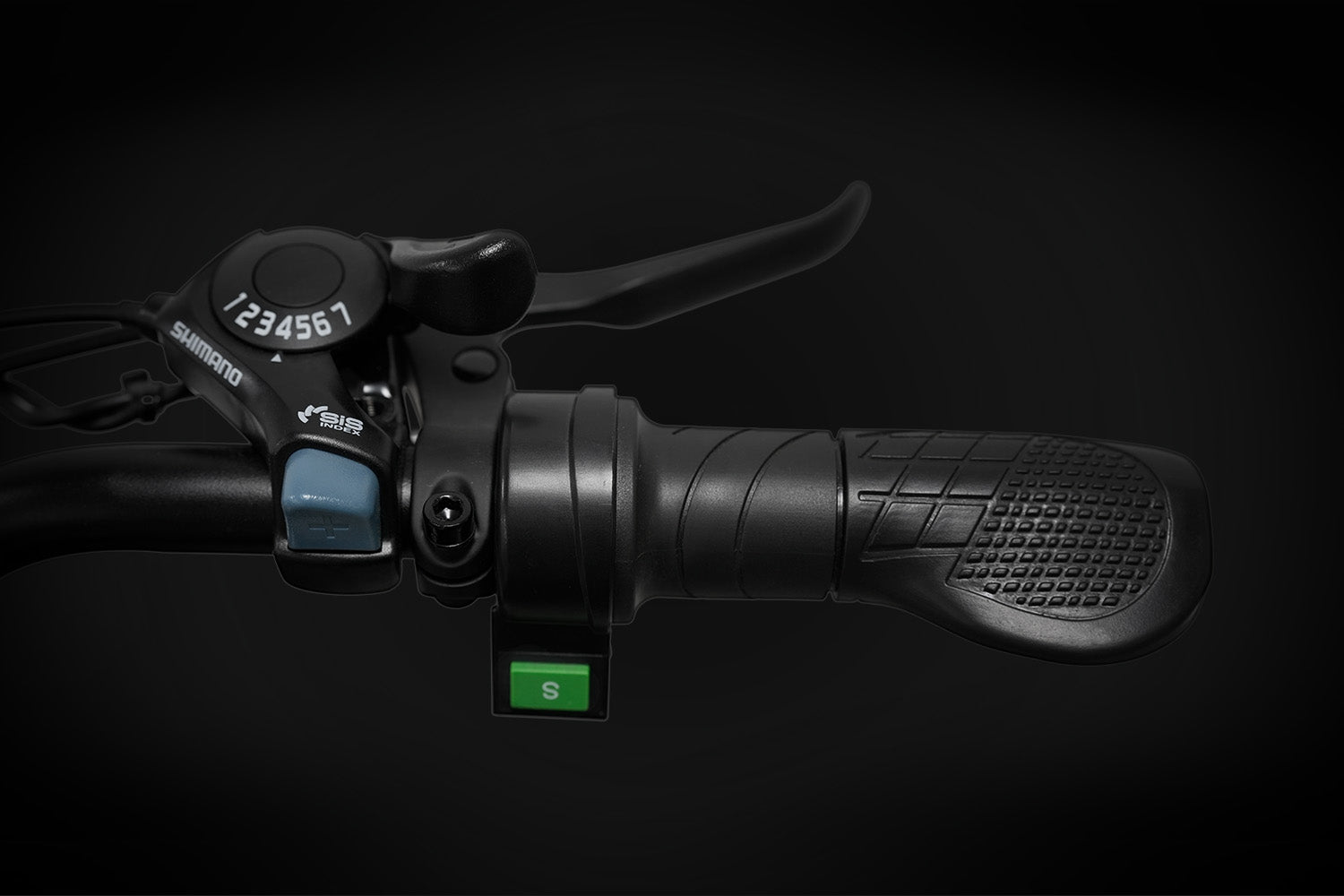
Cold Start Throttle. Instant Power, No Pedaling.
Forget pedaling. The BK20’s cold start throttle delivers instant acceleration from a dead stop. Red light? Steep hill? Just twist the throttle. This is pure, on-demand power engineered for effortless takeoffs and a true motorbike feel.
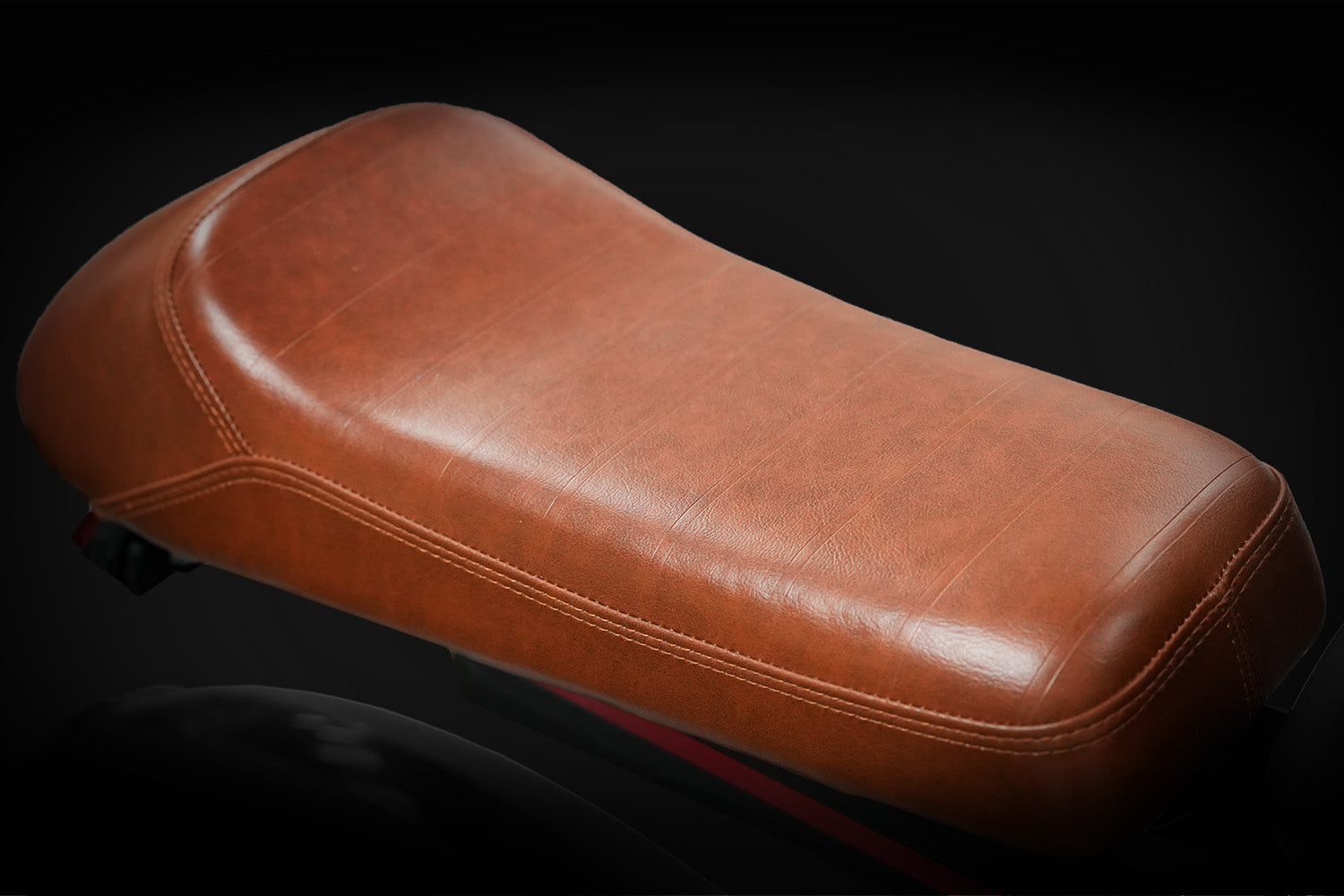
Comfort That Looks as Good as It Feels
Sink into the BK20's wide, ergonomic saddle. Wrapped in a rugged, vintage-style leatherette, it’s built for long-haul comfort and designed to turn heads. It’s the perfect blend of plush support and timeless style for a ride that feels as good as it looks.
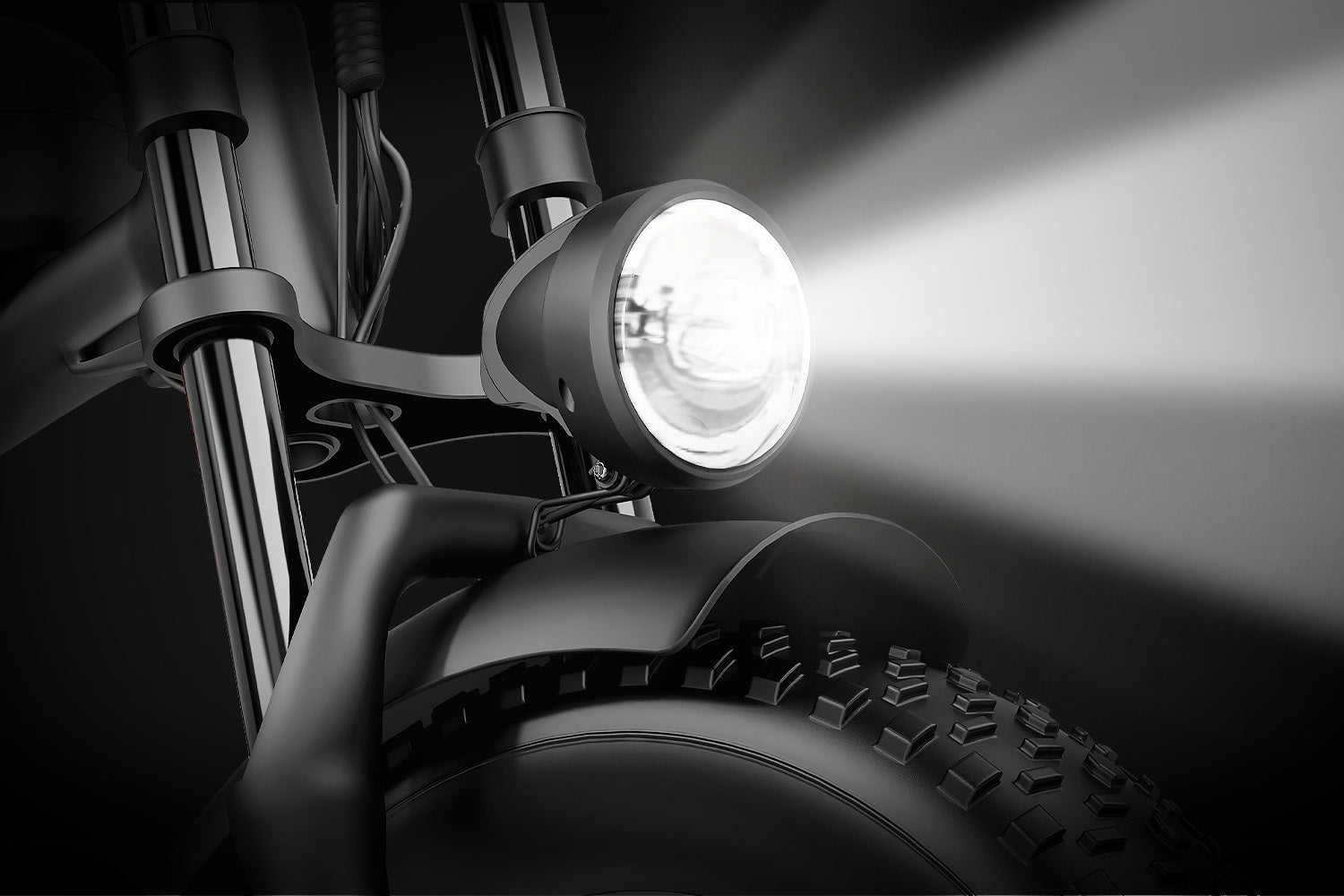
Bright, Focused, and Road-Ready
The BK20’s high-intensity headlight cuts through the dark with precision, lighting your path and making you visible to others. Whether you’re riding at dawn, dusk, or deep into the night, it ensures you see and are seen—for a safer ride every time.
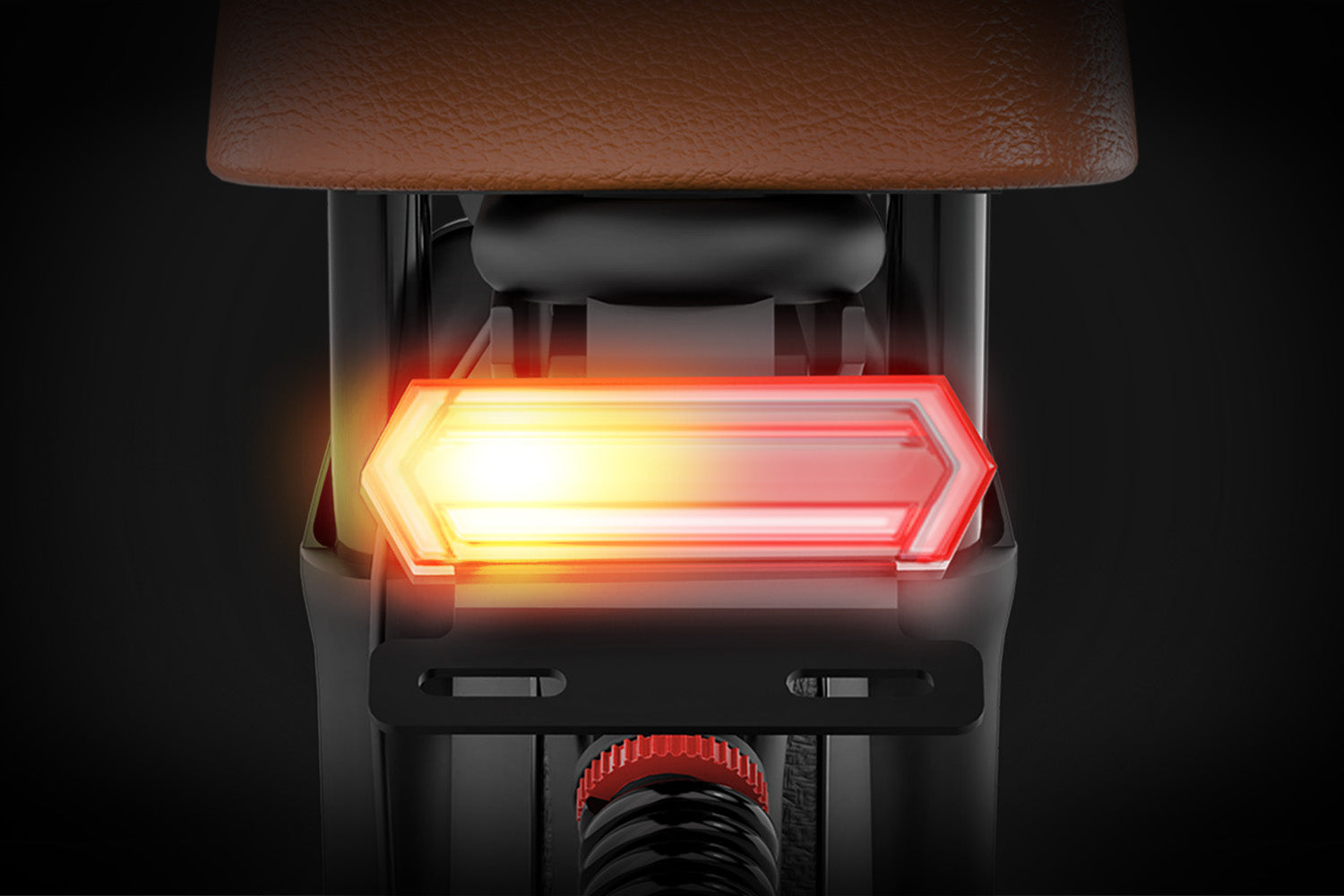
Rear Light System. Stay Seen, Stay Safe.
The BK20’s integrated rear light system features a bright tail light, responsive brake light, and built-in turn signals—keeping you visible and predictable from behind. Whether you're slowing down or changing lanes, your every move is clearly communicated to drivers and riders around you.
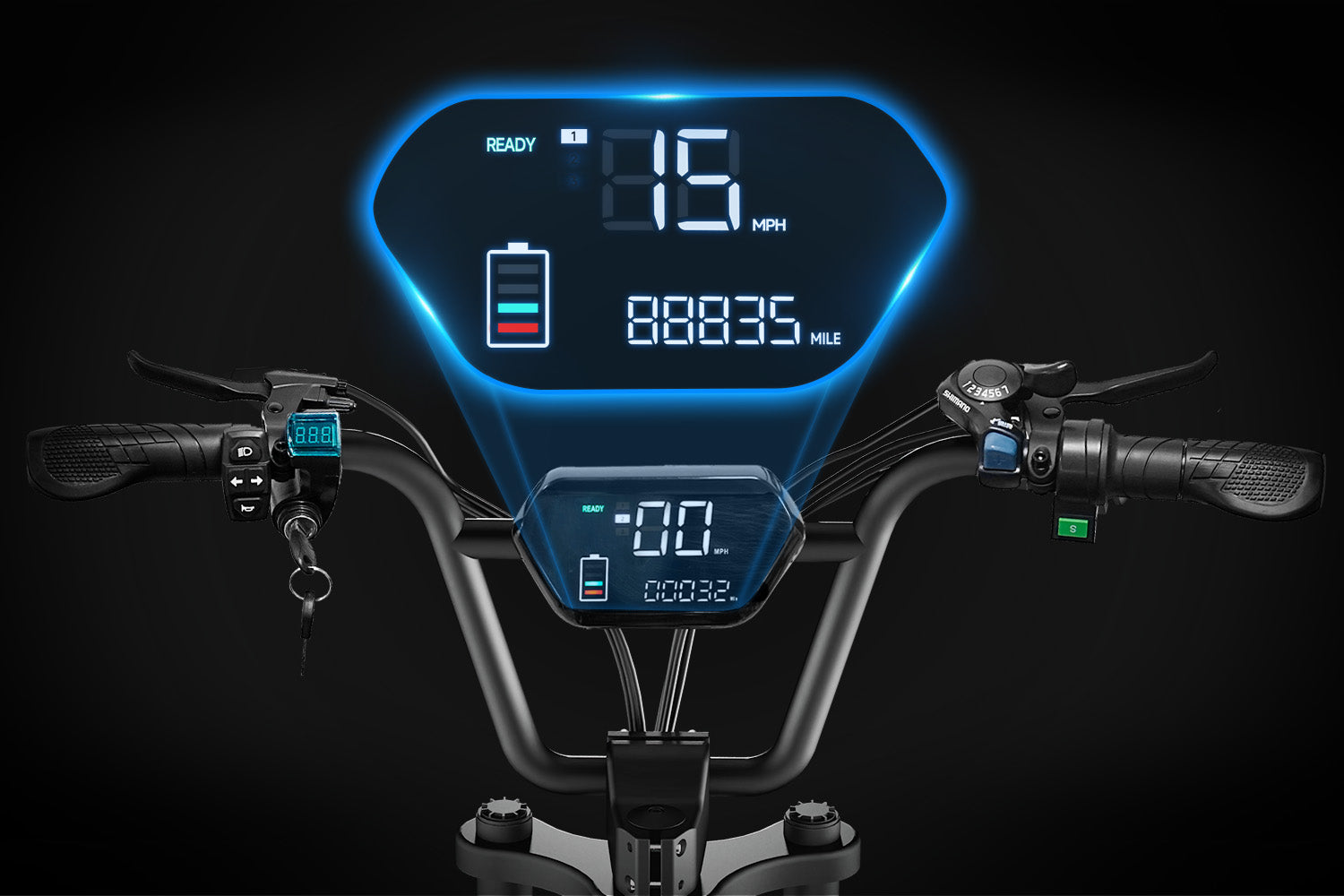
5.6" Color Display. Real-Time Ride Data.
Your vital stats, front and center. The BK20’s vibrant 5.6-inch full-color display delivers everything you need at a glance—speed, battery life, and gear selection—all in sharp, sunlight-readable clarity. Stay informed without distraction.
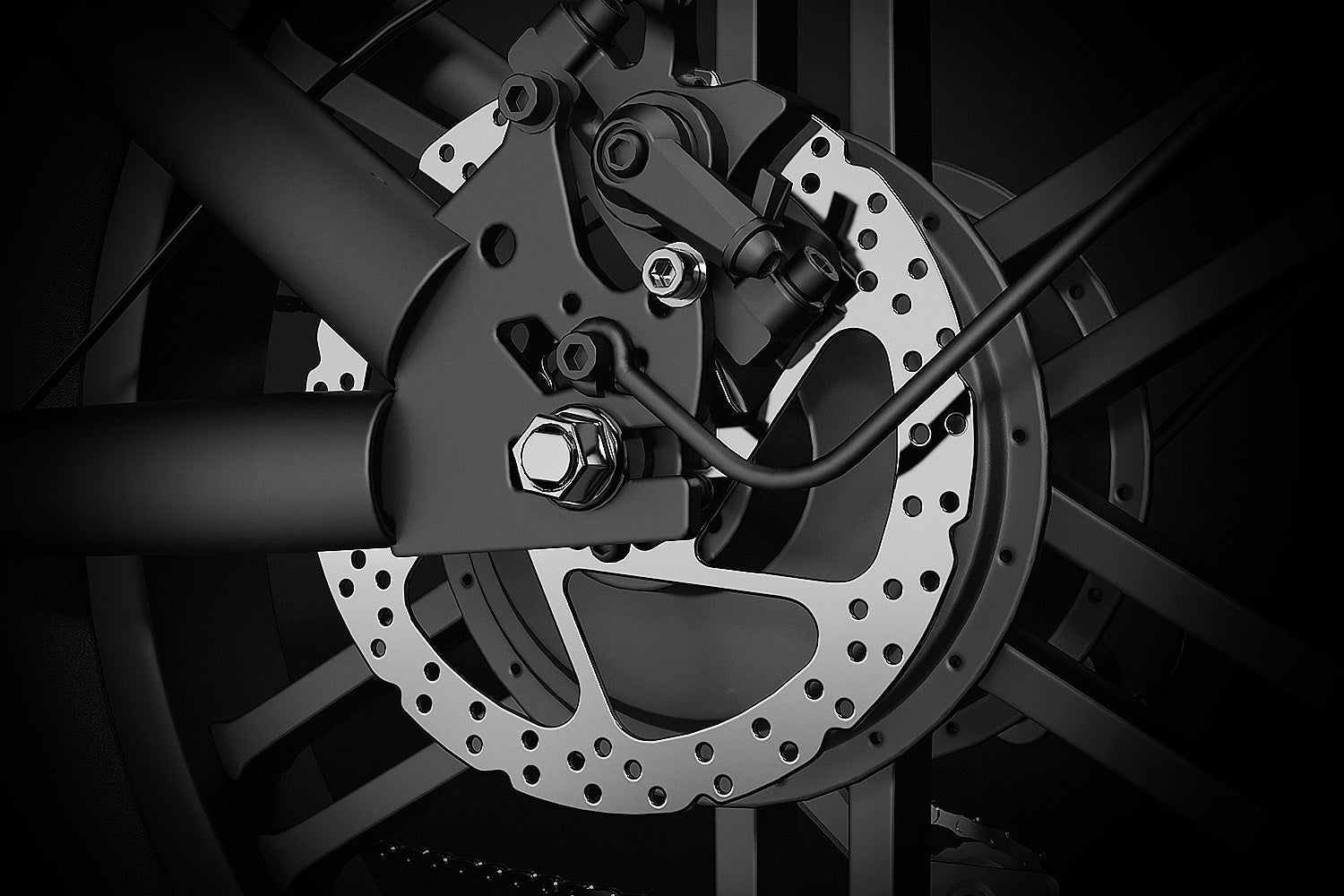
Dual Disc Brakes. Stop with Confidence.
Equipped with front and rear mechanical disc brakes, the BK20 delivers reliable stopping power in all conditions. Whether you're cruising or at top speed, safety comes first—every time you squeeze the lever.
Press Reviews of BK20
| Performance & Power | |
|---|---|
| Motor | 500 W rear hub motor — ~85 Nm torque |
| Battery | 48 V · 18 Ah lithium-ion (≈864 Wh) |
| Range | Up to ~68 miles per charge |
| Top Speed | 28 mph |
| Display | 5.6″ full-color display (speed, battery, ride mode/gear, trip metrics) |
| Throttle | 3-speed thumb throttle |
| Charge Time | Approximately 2–6 hours |
| Brakes, Suspension & Comfort | |
| Front Suspension | Front suspension fork |
| Rear Suspension | Rear suspension |
| Brakes | Front & rear mechanical disc brakes |
| Seat | Comfort saddle (adjustable height) |
| Frame, Geometry & Fit | |
| Frame | Carbon steel frame |
| Vehicle Weight | Approx. 78 lbs |
| Recommended Rider Height | ~5'1" – 6'8" |
| Max Rider / Load Capacity | Up to ~265 lbs rider weight |
| Wheelbase | 116 cm / 45.6 in |
| Overall Length | 168 cm / 66.1 in |
| Overall Height | 122 cm / 48 in |
| Reach | 96 cm / 37.8 in |
| Wheels & Gearing | |
| Tires | 20″ × 4.0″ fat tires |
| Gearing | 7-speed drivetrain with rear derailleur |
| Wheel Type | Reinforced rims suitable for motorbike application |
| Lighting & Safety | |
| Headlight | Integrated LED headlight |
| Taillight & Signals | LED taillight, brake light and turn signals |
| Safety Features | Controller diagnostics, motor cut-off with brakes, battery management protections |
| Horn / Bell | Included |
| Packaging, Included Items & Warranty | |
| Included in Box | BK20 vehicle, charger, user manual, basic tools, keys |
| Warranty | 1-year warranty |
| Delivery | Typically 3–7 business days |
Specifications are subject to change. Actual product may vary slightly due to supplier updates or improvements.
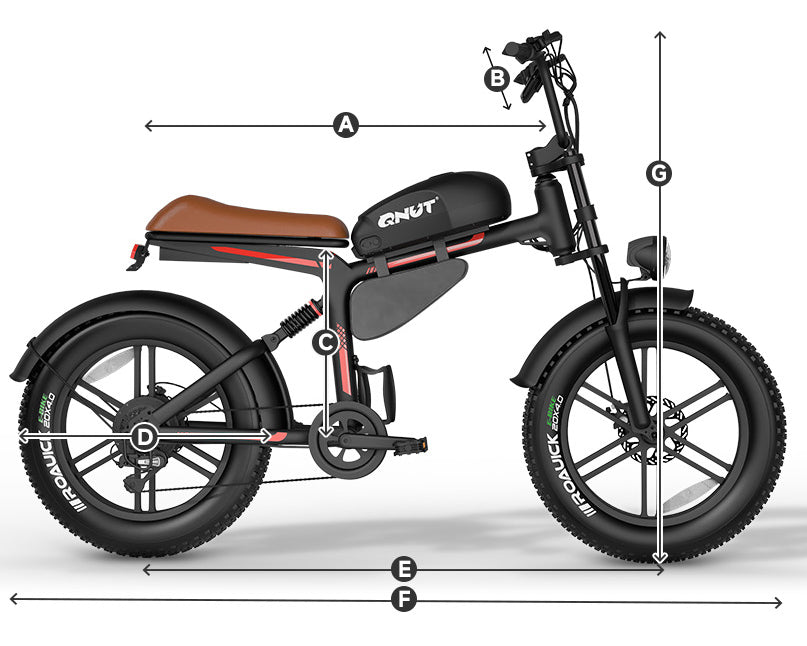
BK20 Geometry
- A: Reach:96cm/37.8in
- B: Handle width: 74cm/29in
- C: Bracket height: 39cm/15.3in
- D: Tire diameter: 58cm/22.8in
- E: Tire distance: 116cm/45.6in
- F: Total length: 168cm/66.1in
- G: Total height: 122cm/48in
- Rider Height: 5'1" - 6'8"
- Maximum Weight: 260 lbs
- E-Bike Weight: 78 lbs
- BK20 E-Motorbike(Arrived 85% Assembled)
- Battery
- Charger
- User Manual
- Installation Tools
- Pedals *2
- Battery Key
- Brake Disc
- Mudguards
- Headlights
For your Wonder
Product & Performance
The BK20 can reach speeds of up to 28 mph (45 km/h), making it suitable for both city commuting and light recreational riding.
With its 48V battery, the BK20 delivers a range of up to 68 miles, depending on terrain, rider weight, and riding mode.
A full charge typically takes 2–6 hours using the standard charger included with the bike.
Yes, the BK20 features a removable lithium-ion battery for convenient charging at home, the office, or anywhere with a standard outlet.
The 500W motor and fat tires provide strong climbing ability and stability on rough terrain, making it capable on hills and mixed surfaces.
Regulations vary by state and country. In most U.S. states, the BK20 is considered a Class 2/3 e-bike and does not require registration or a motorcycle license. Please check your local laws.
Ordering & Support
Each BK20 comes with the motorbike, removable battery, standard charger, toolkit, and a user manual.
The BK20 arrives 85% pre-assembled. Basic installation of the handlebars, pedals, and front wheel is required. Tools and instructions are provided.
Yes, we provide free shipping within the continental United States.
The BK20 comes with a 1-year limited warranty covering the frame, motor, and battery.
Yes, we offer a 30-day return policy.
You can reach our support team through the Contact Us page on qnutbike.com. We’re here to help with troubleshooting, maintenance, or warranty claims.
Entradas de blog
- Al elegir una selección, se actualiza la página completa.
- Se abre en una nueva ventana.






















